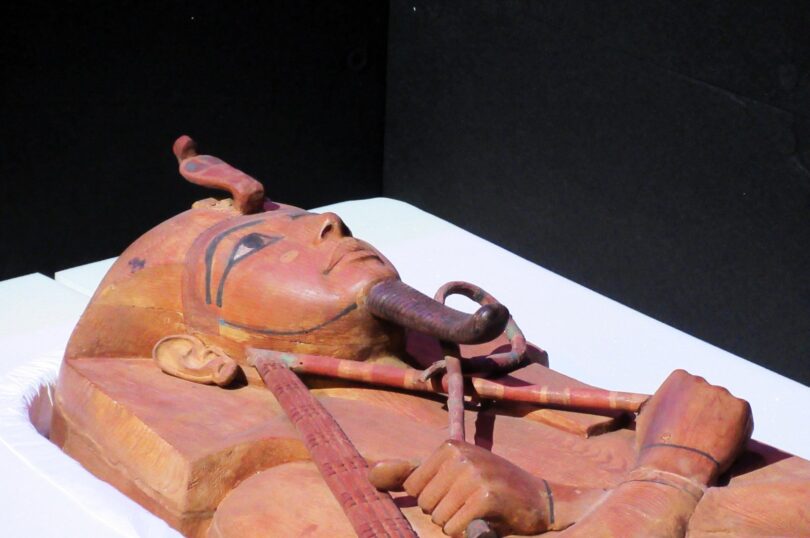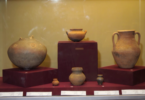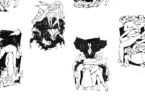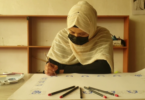(Reuters): In 1976, the sarcophagus containing the mummy of Ramses II was transported out of Egypt for the first time and taken to France for treatment against fungal decay.
Now the ancient Egyptian ruler is back in France to go on display in Paris as part of the traveling exhibition “Ramses and the Gold of the Pharaohs.”
The exhibition, which has already stopped in San Francisco and Houston in the U.S., is the only site where the sarcophagus will join the tour.
France greatly appreciates this trust by Egypt, said French Minister Rima Abdul Malak on Monday at the unveiling of the sarcophagus.
The fact that it is back in Paris after more than 40 years is also proof of the excellent relationship between the two countries, she added.
The wooden coffin was taken out of a high-security transport crate at the Grande Halle de la Villette, where it will be the exhibition’s highlight from April 7 onwards.
Until Sept. 6, over 180 objects from the reign of Ramses will be presented, including royal masks, statues and jewelry. Ramses II is considered one of the most important pharaohs of Ancient Egypt.
He was born around 1303 B.C. and died in 1213 B.C. Ruling for 66 years, he was one of the longest-reigning heads of state in the world. He built numerous palaces and temples, such as the temple complex of Abu Simbel.
In 1976, the sarcophagus was received like a head of state – with a red carpet and much pomp. While the wooden coffin was displayed in the Grand Palais in Paris, scientists treated the mummy with radiation against its increasing decay caused by bacteria and moisture.







